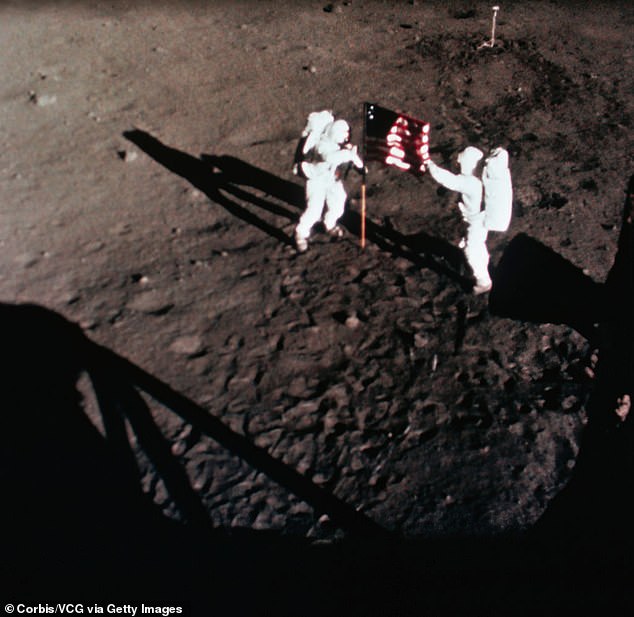Man’s one small step and mankind’s one giant leap on the Moon have reached an important milestone.
Today marks the 55th anniversary of the epic Apollo 11 moon landing, in which Neil Armstrong became the first human to walk on the lunar surface.
Although the mission was a historic milestone for the United States, the celebrated moment obscured secret disputes and the disgusting truth that the Moon had been contaminated with human feces.
The Apollo missions left 96 bags of poop on the Moon (and they’re still there to this day), but that wasn’t the only baggage the astronauts brought back with them.
Today marks the 55th anniversary of the epic Apollo 11 moon landing, in which Neil Armstrong became the first human to walk on the lunar surface. Pictured here are Armstrong and Buzz Aldrin, the second man to walk on the Moon.
The Saturn V rocket lifted off at 9:32 a.m. ET from the Kennedy Space Center in Florida about five years after former President John F. Kennedy delivered a 46-minute speech that launched the United States into space.
“The space is open to us now; and our eagerness to share its meaning is not governed by the efforts of others,” the late president said as he stood behind the lectern during a joint session of Congress on May 25, 1961.
“We are going into space because whatever mankind must undertake, free men must share fully…” the late president said as he stood behind the lectern during a joint session of Congress.
‘First, I believe this nation should commit itself to achieving the goal, before this decade is out, of landing a man on the Moon and returning him safely to Earth.’
The Apollo 11 crew included Commander Armstrong, 38, Eagle pilot Edwin “Buzz” Aldrin, 39, and former test pilot Michael Collins, 38, whose job was to navigate and remain aboard the command module.
The men boarded the Columbia service module, which also carried the lunar module Eagle that would take Armstrong and Aldrin to the lunar surface on July 20, 1969.
Armstrong was the first to leave Eagle, followed by Aldrin, but what many people may not know is that this mission opened a gap between men.
NASA chose Armstrong to take the famous step, but months before the launch, Aldrin was convinced that the honor would be his.
George E. Mueller, NASA’s associate administrator for human space flight at the time, told several people and some members of the press that Aldrin would be the one to leave the first footprint.
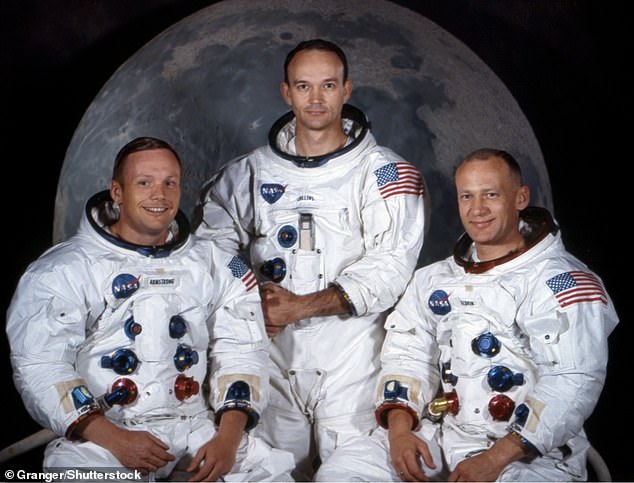
The Apollo 11 crew included (from left) Commander Neil Armstrong, 38, Edwin ‘Buzz’ Aldrin, 39, the pilot of the Eagle, and former test pilot Michael Collins, 38, whose job was to navigate and remain aboard the command module.
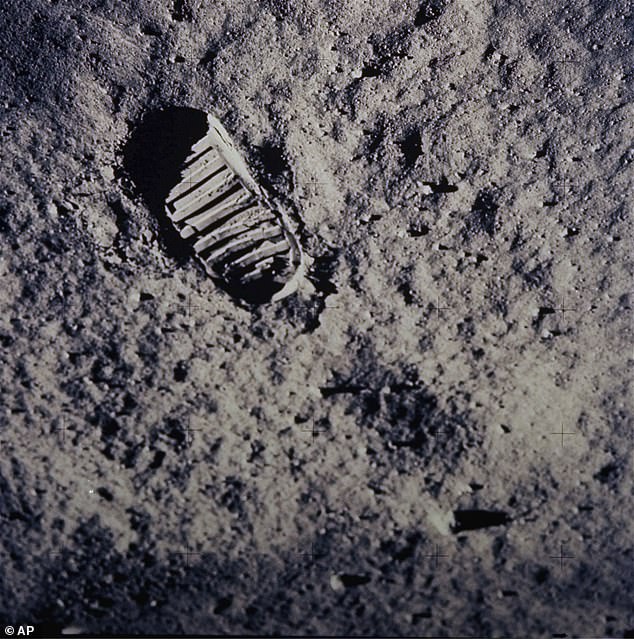
Today marks the 55th anniversary of the epic Apollo 11 moon landing, in which Neil Armstrong became the first human to walk on the lunar surface. The image is believed to show the first footprint of Armstrong’s boot on the Moon.
But as the launch approached, the story changed. Rumors began to spread that Armstrong, not Aldrin, would be the first man to walk on the moon.
NASA knew that whoever it chose to be the first man to descend the Apollo 11 ladder would instantly become a celebrity.
The decision ultimately came down to personality differences between Armstrong and Aldrin.
They needed someone confident and cool, without ego, like Armstrong. By comparison, Aldrin seemed a little too desperate for fame.
But Aldrin was convinced it was the right choice.
He was not only an astronaut, but also a member of the United States Air Force.
Armstrong, on the other hand, was a civilian, and Aldrin felt that giving his fellow astronaut prominence would be an insult to the service.
Aldrin claimed to have expressed his frustrations to Armstrong, although Armstrong later said he could not remember the conversation.
Regardless of whether the conversation took place, the Ohio native did not turn down the opportunity.
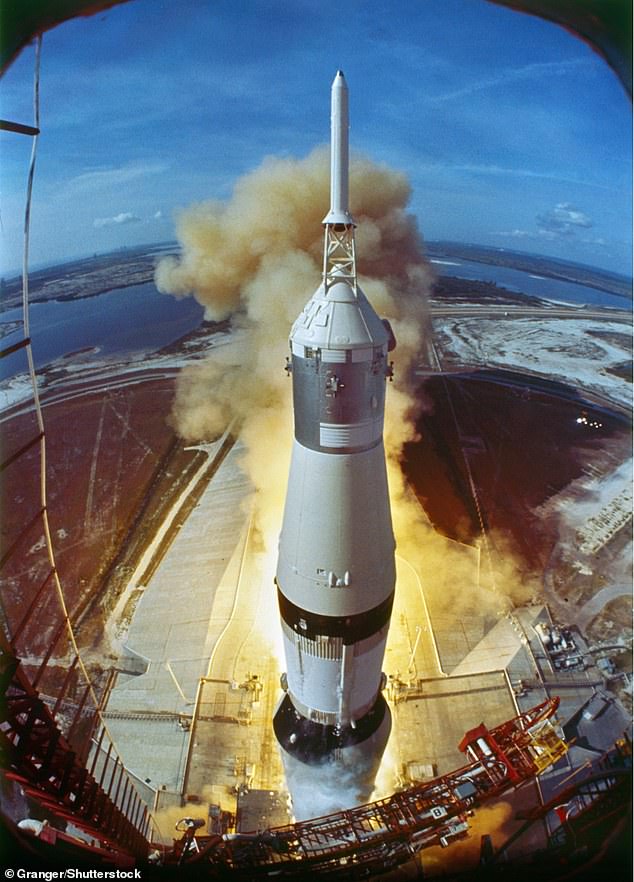
The Saturn V rocket lifted off at 9:32 a.m. ET from the Kennedy Space Center in Florida.
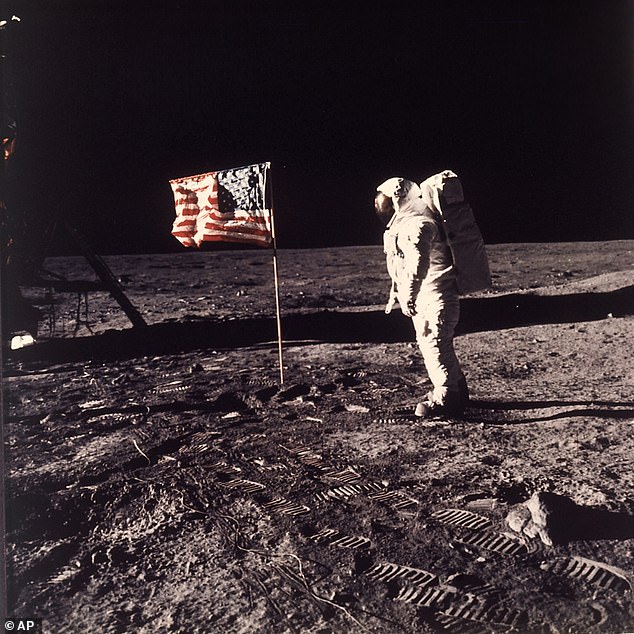
NASA chose Armstrong to take the famous step, but months before the launch, Aldrin (pictured) was convinced the honor would be his.
Aldrin’s next plan of action was to convince his colleagues, specifically Eugene Cernan, the last man to walk on the moon.
The men met when they were selected for the third group of astronauts in November 1963 and trained together the following year.
Cernan said Aldrin “came into my office at the Manned Space Flight Center one day like an angry stork, laden with graphs and charts and statistics, arguing what he considered obvious: that he, the lunar module pilot, and not Neil Armstrong, should be the first to descend the Apollo 11 ladder.”
He too He described the meeting as “offensive and ridiculous.”
However, Aldrin later wrote a book in which he noted that the meeting was far less dramatic than Cernan had claimed.
Aldrin wrote that during training, he realized he did not want the fame and responsibility that would come with being the first man on the moon.
On April 14, 1969, NASA made the decision official: Armstrong would be the first man to set foot on the Moon.
Whether this led to further conflict between Aldrin and his colleagues is a matter that history does not know.
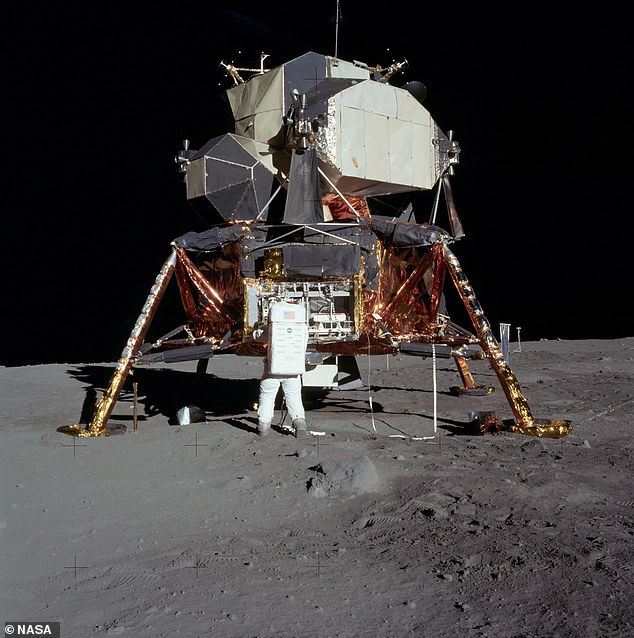
The men boarded the Columbia service module, which was also carrying the Eagle lunar module (pictured) that would take Armstrong and Aldrin to the lunar surface.
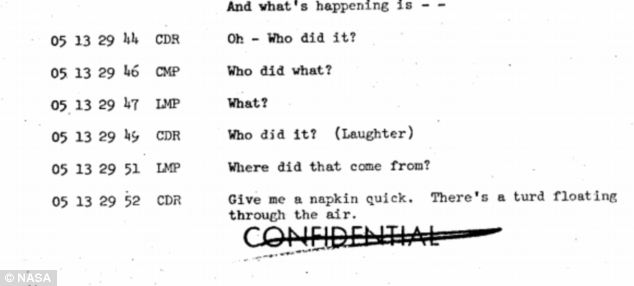
The Apollo 10 mission conversation log revealed that astronauts had to deal with some tricky bathroom-related issues.
The trip to the Moon lasted three days, three hours and 49 minutes and, like any human being, the crew had to relieve themselves.
But going to the bathroom on a spaceship is nothing like it is here on Earth.
Even with the technology we have today, defecating in space is a cumbersome experience.
Astronauts are trained to connect to special toilets that suck solid waste into garbage bags, which are then placed in airtight containers.
But there was no bathroom on Apollo 11, or any other Apollo spacecraft.
In fact, the first toilet was not installed on an American spacecraft until the 1980s.
So Armstrong, Aldrin and Collins had to “suit it up.”
Each of them wore a “urine collection device” under their spacesuits, which was essentially a diaper with a roll-up cuff to provide sanitary protection.
The collected urine would then be transferred through a rubber tube to a liquid waste tank.But defecating on the Apollo 11 spacecraft was much more complicated.
Astronauts used “fecal bags,” which were essentially plastic bags taped to their buttocks to capture feces.
Aligning the bag’s opening with the flap on the back of the astronauts’ spacesuits was also a challenge.
The entire process could take about 45 minutes, according to one Apollo astronaut’s estimate, and would be complicated.
On the Apollo 10 mission, which only orbited the Moon, astronaut Tom Strafford said: ‘Get me a napkin real quick.
“There’s poop floating in the air,” according to a NASA transcript.
After relieving themselves, the Apollo 11 astronauts sealed the bag, added a little bactericide and kneaded it to mix everything together.
Most of the baggies ended up in larger human waste bags, except for a few that astronauts brought back to Earth for testing.
After Apollo 11 finally landed on the lunar surface on July 20, 1969, the astronauts had to take some weight off their shoulders. Otherwise, they wouldn’t have been able to make the nearly 500,000-mile journey home.
As they prepared for the flight back to Earth, Armstrong and Aldrin spent about eight minutes stripping the spacecraft of everything that wasn’t needed, including bags of human waste.
Between 1961 and 1975, the Apollo missions left nearly 100 bags of urine, feces and vomit on the Moon.
Some scientists believe we should recover the bags just in case some of the bacteria they contained might have survived. If so, it would tell us a lot about how life can persist in extremely hostile environments.
But other experts are convinced there is no way the bacteria could have survived the moon’s intense cold and harsh solar radiation.


